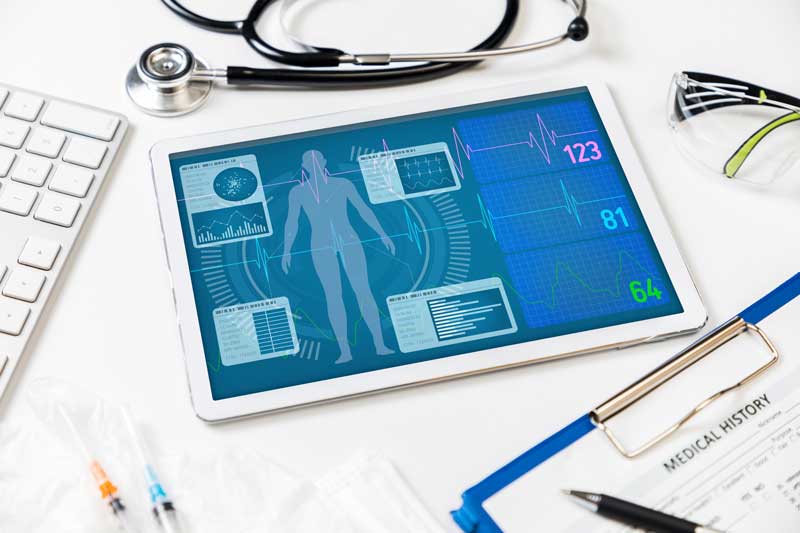Resource • Article
Five New Tech Options to Use in your Virtual Trial

Have you heard of virtual clinical trials? They are trials in which patients can do most of their study activities from home instead of traveling to a study site. A true virtual trial would thus eliminate the need for study sites and would rely entirely on remote monitoring and on-demand medical services when needed. At Biorasi, we have been wondering if it is really possible to design a trial to be completely virtual and what that would entail. These questions are the subject of our next white paper, which will be released later this year. For now, we have decided to feature some interesting technologies that could be put to use in a virtual, or maybe semi-virtual, trial.
- Portable electrocardiogram (ECG) monitors: AliveCor boasts an “FDA-cleared, clinical grade ECG monitor” that comes with an app for either an Apple Watch or your phone. With either system, the technology is able to construct a valid heart rhythm and interpret it as either normal or abnormal. This has far-reaching implications in medicine alone, as this can allow for early detection of dangerous heart arrhythmias, but there is also a huge potential for generated data to be used in clinical trials. Similar devices can detect other vitals such as heart rate, blood pressure, blood oxygenation, and body temperature.
- An eye lens that can measure circulating glucose: These have been in the works for a while, but previous versions were brittle (could easily break and cause damage to eye) or translucent/opaque (could block some vision). Jang-Ung Park’s lab at UNIST developed a lens that broke through these barriers and can communicate data wirelessly for monitoring. They state the lens could be used to measure glucose in diabetics, and this would certainly be the least invasive method available to do so. The eye seems an appropriate place to measure glucose, since high concentrations in this area are what lead to loss of vision in diabetics.
- A wristwatch that measures blood alcohol content: Need to know your blood alcohol content? Or do you need to know your patient’s blood alcohol content? BACtrack’s SKYN can be either integrated with an Apple Watch or worn as a standalone wristband. This wearable device senses the concentration of alcohol in sweat, which is related to the concentration of alcohol in blood. What better place to get a good sample of sweat than under your watch strap?
- Wi-fi enabled smart scales: There are many of these types of scales available, but people don’t seem to talk about them as much. Simple yet sophisticated, these scales offer convenient, accurate, real-time measurements of one of the most important health outcomes: body weight. But they can do so much more than that. Some also claim to measure fat mass, water percentage, and bone mass. Some even have a pregnancy mode for tracking expected changes in weight over time.
- An ingestible sensor that tracks medication compliance: Last year, the FDA approved a device-drug combination that incorporated Proteus’ ingestible sensor, a device the size of a “grain of sand.” When a drug is consumed that has been manufactured to have this sensor attached, the sensor communicates to a patch worn on the skin near the stomach, signaling that the medication has been taken. This signal is tracked in an app on your phone, and the patient can choose to share the data with family members and healthcare providers. Importantly, studies to show whether the device improves compliance are needed, and this could conceivably be measured. The device allows for compliance to be assessed objectively. On top of that, an app like this could be configured to send the patient reminders to take meds if they forget. All of this is helpful in improving both medicine and research. What more can you ask for?
When validated, calibrated, and functioning properly, these devices allow for more accurate measurements, more frequent measurements, immediate incorporation of data into an electronic data capture (EDC) system, and minimal effort of the research participant. The cost may be higher for some of these technologies compared to current standards of care, but as they are incorporated into medical practice, insurance companies may start to see the value in reimbursing for such devices. Transmission of data over secure servers is important to protect health information, and this requires vigilance and experience to be able to collect clinical trial data with these wireless devices.